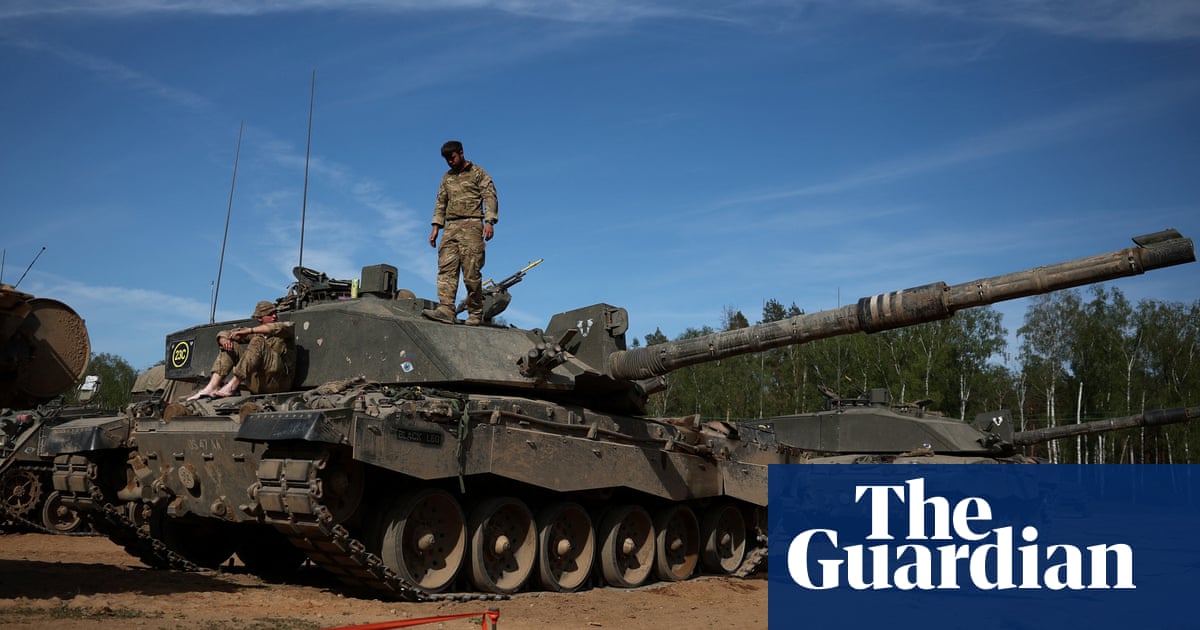The UK will spend £1.5bn on building six munitions and energetics factories to “better deter our adversaries” as part of its long-awaitedstrategic defence review.
John Healey, the defence secretary, said the funds formed part of plans for an “always-on” weapons pipeline and would support the procurement of up to 7,000 UK-built long-range weapons.
The 130-page strategic defence review willset out the threats Britain faces, including the “immediate and pressing” danger posed by Russia, and the capabilities needed to meet them. Due to be unveiled by Keir Starmer on Monday, it will draw heavily on lessons learned from the war inUkraine.
Plans to step up munitions production are a response to the review’s call for an “always on” capacity that can be scaled up quickly if needed.
Healey said: “The hard-fought lessons from Putin’s illegal invasion of Ukraine show a military is only as strong as the industry that stands behind them. We are strengthening the UK’s industrial base to better deter our adversaries and make the UK secure at home and strong abroad.”
He said theUK defence industrywould become “an engine for economic growth” and boost skilled jobs. The new £1.5bn funding will see spending on UK munitions hit £6bn during this parliament and support 1,800 jobs across the UK, according to the Ministry of Defence.
Rachel Reeves, the chancellor, said that “a strong economy needs a strong national defence, and investing in weaponry and munitions and backing nearly 2,000 jobs across Britain in doing so is proof the two go hand-in-hand”.
As part of the review, the Ministry of Defence will be urged to lay the industrial foundations for an uplift in munitions stockpiles to meet the demand of“high-tempo” warfare.
Ministers have also announced more than £1.5bn to improvethe condition of military homesby carrying out urgent repairs such as fixing boilers and roofs and tackling damp.
“Our forces make extraordinary sacrifices to keep us safe and to serve this country and yet for years, we’ve forced their families to live in substandard homes,” Healey said on a visit to military accommodation in Cambridgeshire.
Starmer launched the strategic defence reviewshortly after entering office last yearand said it would help prepare the UK for “a more dangerous and volatile world”.
Sign up toFirst Edition
Our morning email breaks down the key stories of the day, telling you what’s happening and why it matters
after newsletter promotion
The document will paint a picture of the most heightened military and security threat since the end of the cold war, though it falls short of saying that the intensity ofMoscow’s cyber and sabotage activitiesmeans the UK has already drifted into a war with Russia.
It will also set out an assessment ofthe current state of the UK’s armed forces. Figures out this week show that the size of the army has dropped below the target to the lowest level since the Napoleonic era and earlier, with the number of full-time trained soldiers at 70,860 on 1 April, down 2.3% over the preceding year.
The review is not expected to set out fresh commitments for defence spending, but will instead reiterate a commitment made by Starmer in February to increase the defence budget to 2.5% of GDP by 2027 and to 3% in the next parliament.
It was written by former Nato secretary-general George Robertson, former US presidential adviser Fiona Hill and former joint force commander Richard Barrons.
